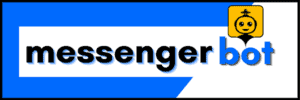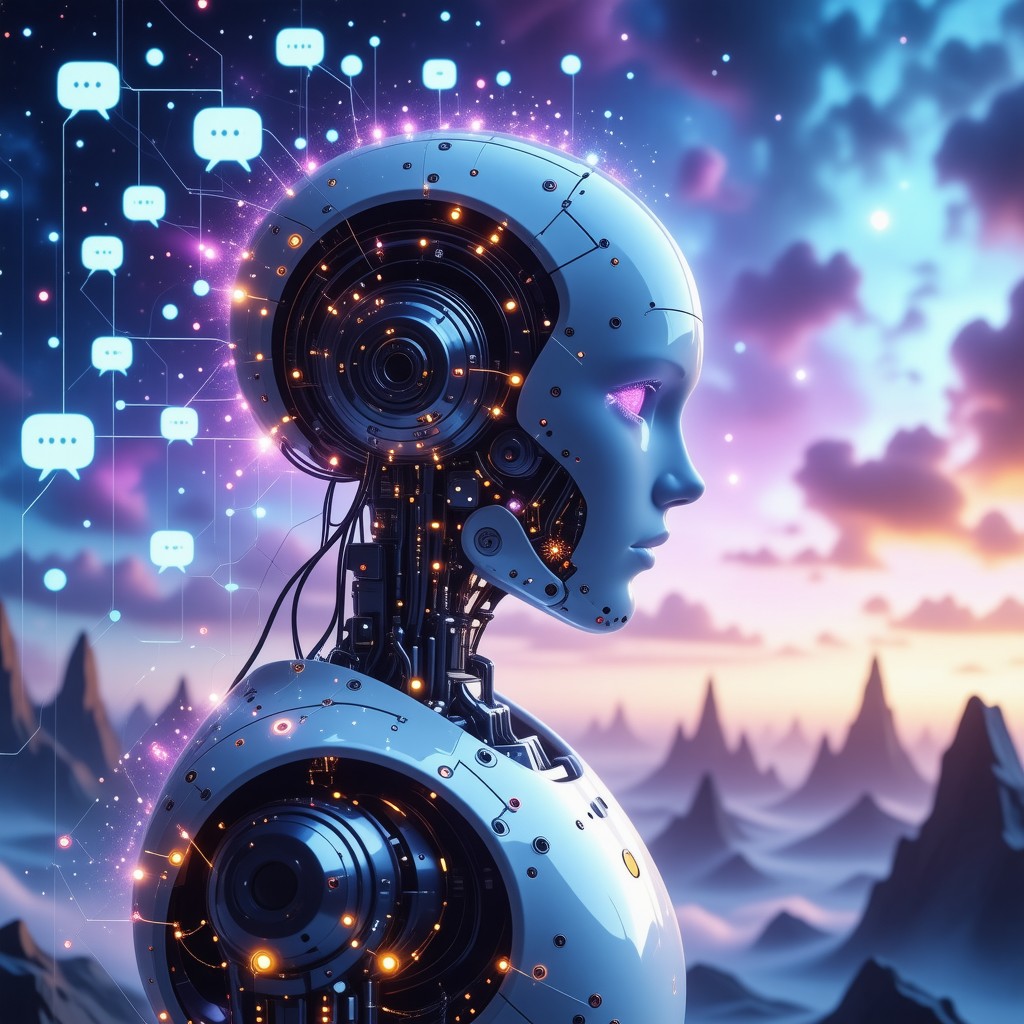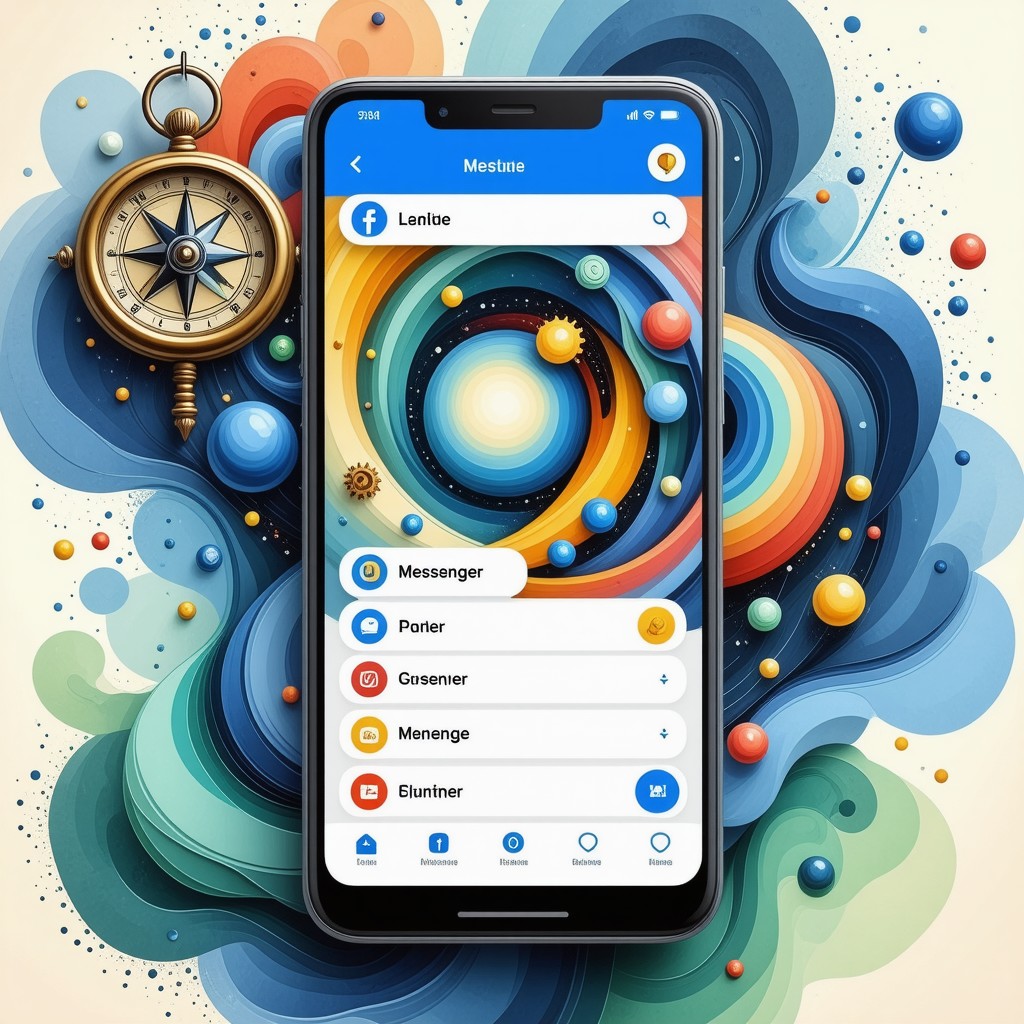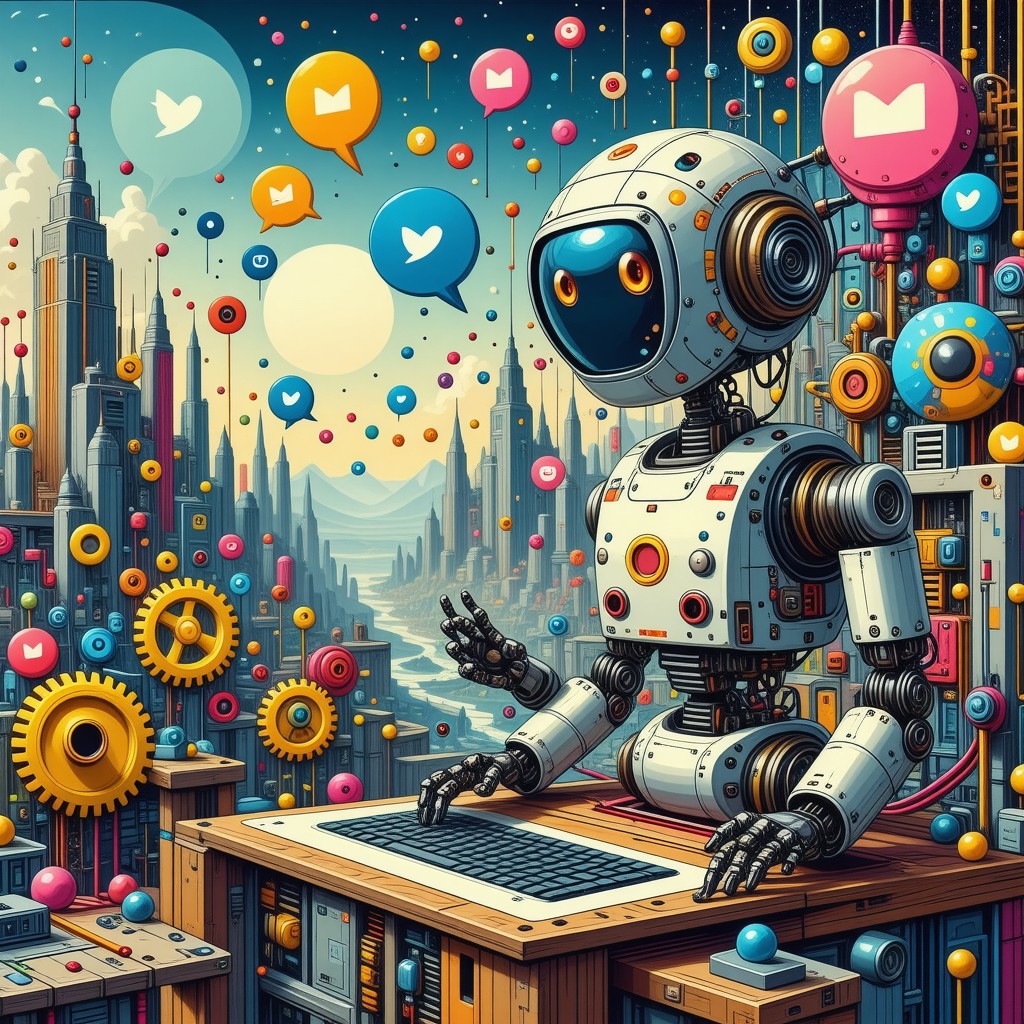Key Takeaways
- Transformative Tool: Chatbot AI projects revolutionize customer interactions, enhancing efficiency and satisfaction in various industries.
- Machine Learning Integration: Leveraging machine learning improves chatbot responsiveness and personalization, making user interactions more intuitive.
- Free Development Platforms: Utilize platforms like Botpress and Dialogflow to create AI chatbots at no cost, making technology accessible for everyone.
- Step-by-Step Creation: Follow a structured approach to develop your AI chatbot, focusing on user needs and effective conversation design.
- Understanding Chatbot Types: Differentiate between rule-based and AI-driven chatbots to choose the right technology for your project.
- Continuous Improvement: Regularly update and refine your chatbot based on user feedback and performance analytics to enhance effectiveness.
In today’s digital landscape, the chatbot AI project has emerged as a transformative tool, reshaping how businesses interact with customers and streamline operations. But what exactly constitutes a chatbot as an AI project? This article will delve into the fundamentals of AI and chatbots, exploring the pivotal role of machine learning in their development. If you’ve ever wondered whether you can create your own AI like ChatGPT, we will guide you through various AI chatbot projects on GitHub and introduce you to essential tools and resources for building your own AI chatbot. Additionally, we will discuss how to make an AI chatbot for free, highlighting accessible platforms and open-source templates that can kickstart your journey. As we compare different AI chatbot technologies, we will clarify whether chatbot AI is synonymous with ChatGPT and examine the unique features that set it apart. Finally, we will provide a step-by-step guide to developing your AI chatbot project, along with best practices to ensure its effectiveness. Join us as we explore the exciting world of chatbot AI projects and unlock the potential of this innovative technology.
Is Chatbot an AI Project?
Understanding the Basics of AI and Chatbots
Chatbots are indeed a significant AI project, representing a fusion of artificial intelligence and natural language processing (NLP) technologies. They are designed to facilitate human-like interactions with users, enabling seamless communication across various platforms, including websites, messaging applications, social media, and voice assistants.
- Definition and Functionality: Chatbots utilize AI algorithms to understand and respond to user inquiries in real-time. They can be categorized into two main types: rule-based chatbots, which follow predefined scripts, and AI-driven chatbots, which leverage machine learning to improve responses over time.
- Applications: Chatbots are widely used in customer service, providing instant support and information to users. They can handle multiple queries simultaneously, reducing wait times and improving user satisfaction. Additionally, they are employed in e-commerce for personalized shopping experiences and in healthcare for patient engagement.
- Technological Framework: The development of chatbots involves various technologies, including NLP, machine learning, and sometimes deep learning. These technologies enable chatbots to comprehend context, sentiment, and intent, making interactions more intuitive.
- Integration with Platforms: Chatbots can be integrated into popular messaging platforms, such as Facebook Messenger, enhancing their accessibility and user engagement. This integration allows businesses to reach customers where they are most active, providing timely assistance and information.
- Future Trends: The future of chatbots is promising, with advancements in AI and NLP leading to more sophisticated interactions. Trends such as voice recognition, emotional intelligence, and multi-turn conversations are expected to enhance user experiences further.
The Role of Machine Learning in Chatbot Development
Machine learning plays a crucial role in the evolution of AI chatbot projects. By employing algorithms that allow chatbots to learn from interactions, businesses can create more responsive and intelligent systems.
- Adaptive Learning: Machine learning enables chatbots to adapt their responses based on user interactions. This continuous learning process improves the accuracy and relevance of responses over time.
- Data Utilization: Chatbots can analyze vast amounts of data to identify patterns and trends, which helps in personalizing user experiences. For instance, by understanding user preferences, chatbots can offer tailored recommendations in e-commerce settings.
- Natural Language Understanding: Through machine learning, chatbots enhance their natural language understanding capabilities, allowing them to interpret user intent more effectively. This leads to more meaningful conversations and improved user satisfaction.
- Scalability: Machine learning allows for the scalability of chatbot solutions. As businesses grow, chatbots can handle increased volumes of inquiries without compromising on response quality.
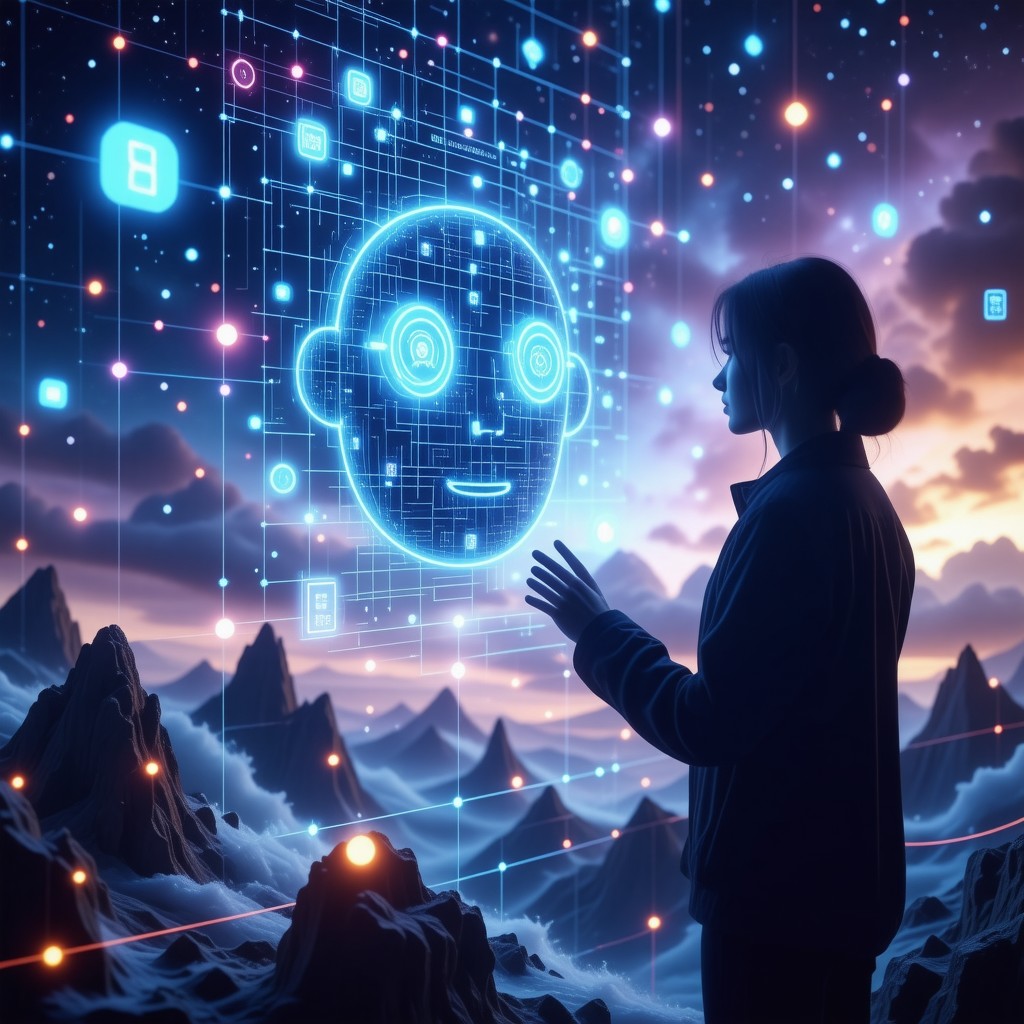
Can I create my own AI like ChatGPT?
Yes, you can create your own AI like ChatGPT by following a structured approach. Here are the key steps to consider:
- Define Your Objectives: Identify the specific use cases and target audience for your AI application. Understanding the needs of your users will guide the development process.
- Choose the Right AI Model: Select an appropriate AI model for your application. Options include OpenAI’s GPT-4, Google’s BERT, or other alternatives like Hugging Face’s Transformers. Each model has its strengths depending on your requirements.
- Data Collection: Gather domain-specific data that your AI will use for training. This data should be relevant and diverse to ensure the AI can generate accurate and contextually appropriate responses.
- Development Framework: Build the backend and frontend components of your application. Utilize frameworks such as TensorFlow or PyTorch for model training and Flask or Django for the web application.
- Fine-Tuning: Fine-tune your chosen model on your specific dataset. This process involves adjusting the model’s parameters to improve its performance on tasks relevant to your application.
- Prompt Engineering: Develop effective prompts that guide the AI in generating desired responses. This step is crucial for enhancing the quality of interactions.
- Testing and Iteration: Rigorously test your AI application with real users. Gather feedback and iterate on the design and functionality to improve user experience.
- Deployment: Once testing is complete, deploy your AI application on a suitable platform. Ensure it is scalable and can handle user traffic effectively.
- Compliance and Ethics: Consider ethical implications and ensure compliance with data protection regulations, such as GDPR, when handling user data.
For further insights, you can refer to resources like the OpenAI documentation and research papers on AI model training and deployment. By following these steps, you can successfully create an AI application tailored to your specific needs.
Exploring AI Chatbot Projects on GitHub
GitHub is a treasure trove for AI chatbot projects. You can find numerous repositories that showcase various implementations of chatbots, including those built on popular frameworks. These projects often come with detailed documentation, making it easier for you to understand the architecture and functionality of different AI chatbots.
Some notable projects include:
- Microsoft Bot Framework Samples – A collection of samples demonstrating how to build chatbots using Microsoft’s Bot Framework.
- ChatGPT – An open-source implementation of the ChatGPT model, allowing you to explore its capabilities.
- Awesome Chatbot – A curated list of resources and projects related to chatbots.
By exploring these projects, you can gain valuable insights and inspiration for your own AI chatbot project.
Can I make an AI chatbot for free?
Yes, you can create an AI chatbot for free using various platforms that offer robust tools and resources. Here are some popular options:
- Botpress: Botpress is an open-source chatbot development platform that allows you to build, deploy, and manage AI chatbots without any cost. It provides a user-friendly interface and extensive documentation, making it suitable for beginners. You can learn how to use Botpress through comprehensive tutorials available on platforms like YouTube, which guide you step-by-step in creating your chatbot.
- Dialogflow: Google’s Dialogflow offers a free tier that enables you to create conversational interfaces for websites, mobile applications, and messaging platforms. It utilizes natural language processing (NLP) to understand user queries and respond appropriately. The platform also integrates with various messaging services, enhancing its versatility.
- Microsoft Bot Framework: This framework allows developers to build chatbots that can be deployed across multiple channels, including websites and social media. The Bot Framework is free to use, although there may be costs associated with hosting and additional services.
- Tidio: Tidio provides a free plan that includes chatbot functionalities for small businesses. It combines live chat and chatbot features, allowing you to engage with customers effectively.
- ManyChat: While primarily focused on Facebook Messenger, ManyChat offers a free plan that allows you to create chatbots for marketing and customer service. It’s user-friendly and ideal for those looking to enhance their social media engagement.
For more detailed guidance on building your chatbot, consider exploring tutorials and resources available on the respective platforms’ websites or community forums. By leveraging these free tools, you can create an effective AI chatbot tailored to your needs without incurring any costs.
Free Platforms for AI Chatbot Development
When embarking on your AI chatbot project, selecting the right platform is crucial. Here are some free platforms that stand out:
- Chatfuel: This platform is particularly popular for creating chatbots for Facebook Messenger. Chatfuel offers a free plan that allows you to build and deploy chatbots without coding knowledge, making it accessible for all users.
- Landbot: Landbot provides a free tier that enables you to create conversational chatbots with a visual builder. This platform is ideal for those who prefer a drag-and-drop interface to design their chatbot interactions.
- Flow XO: Flow XO offers a free plan that allows you to create chatbots for various messaging platforms. It includes a visual workflow builder and supports integrations with other services, enhancing its functionality.
These platforms not only allow you to create your own AI chatbot projects for free but also provide valuable resources and community support to help you succeed in your development journey.
Is Chatbot AI the Same as ChatGPT?
Chatbot AI and ChatGPT are not the same, although they share some similarities in their functionality. Here are the key differences and features that distinguish them:
Comparing Different AI Chatbot Technologies
- Definition and Purpose:
- Chatbots: These are AI programs designed to simulate conversation with users, typically through text or voice. They are often rule-based or use simpler machine learning models to respond to user queries. Their primary function is to assist with specific tasks, such as customer service or information retrieval.
- ChatGPT: Developed by OpenAI, ChatGPT is a sophisticated language model that utilizes deep learning techniques to generate human-like text. It is capable of understanding context, maintaining conversations, and providing detailed responses across various topics.
- Capabilities:
- Multimodal Interaction: While traditional chatbots are generally limited to text-based interactions, ChatGPT has the potential for multimodal capabilities, allowing it to process and generate responses not only from text but also from images (as seen in advancements like GPT-4).
- Contextual Understanding: ChatGPT excels in maintaining context over longer conversations, making it more effective for complex interactions compared to standard chatbots, which may struggle with context retention.
- Applications:
- Chatbots: Commonly used in customer support, e-commerce, and simple task automation. They can be integrated into platforms like Messenger to provide quick responses to user inquiries.
- ChatGPT: Used in a broader range of applications, including content creation, tutoring, and creative writing, due to its advanced language processing abilities.
- Learning and Adaptation:
- Chatbots: Often require manual updates and training to improve their responses, relying on predefined scripts or limited datasets.
- ChatGPT: Continuously learns from vast amounts of text data, allowing it to adapt and improve its conversational abilities over time.
In summary, while both chatbot AI and ChatGPT serve the purpose of facilitating communication, ChatGPT offers a more advanced, flexible, and context-aware solution, making it suitable for a wider array of applications. For further reading on the differences between various AI models, you can refer to sources like OpenAI’s official documentation.
The Unique Features of ChatGPT in the AI Landscape
ChatGPT stands out in the AI landscape due to its unique features:
- Advanced Language Processing: ChatGPT’s ability to generate coherent and contextually relevant text makes it a powerful tool for applications requiring nuanced communication.
- Versatility: Unlike traditional chatbots that are often limited to specific tasks, ChatGPT can engage in diverse conversations, making it suitable for various industries, from customer service to education.
- Continuous Improvement: The model’s architecture allows it to learn from interactions, enhancing its performance over time, which is a significant advantage over static chatbot systems.
For those interested in exploring AI chatbot projects, platforms like Brain Pod AI offer innovative solutions that leverage advanced AI technologies, including multilingual capabilities and customizable features.
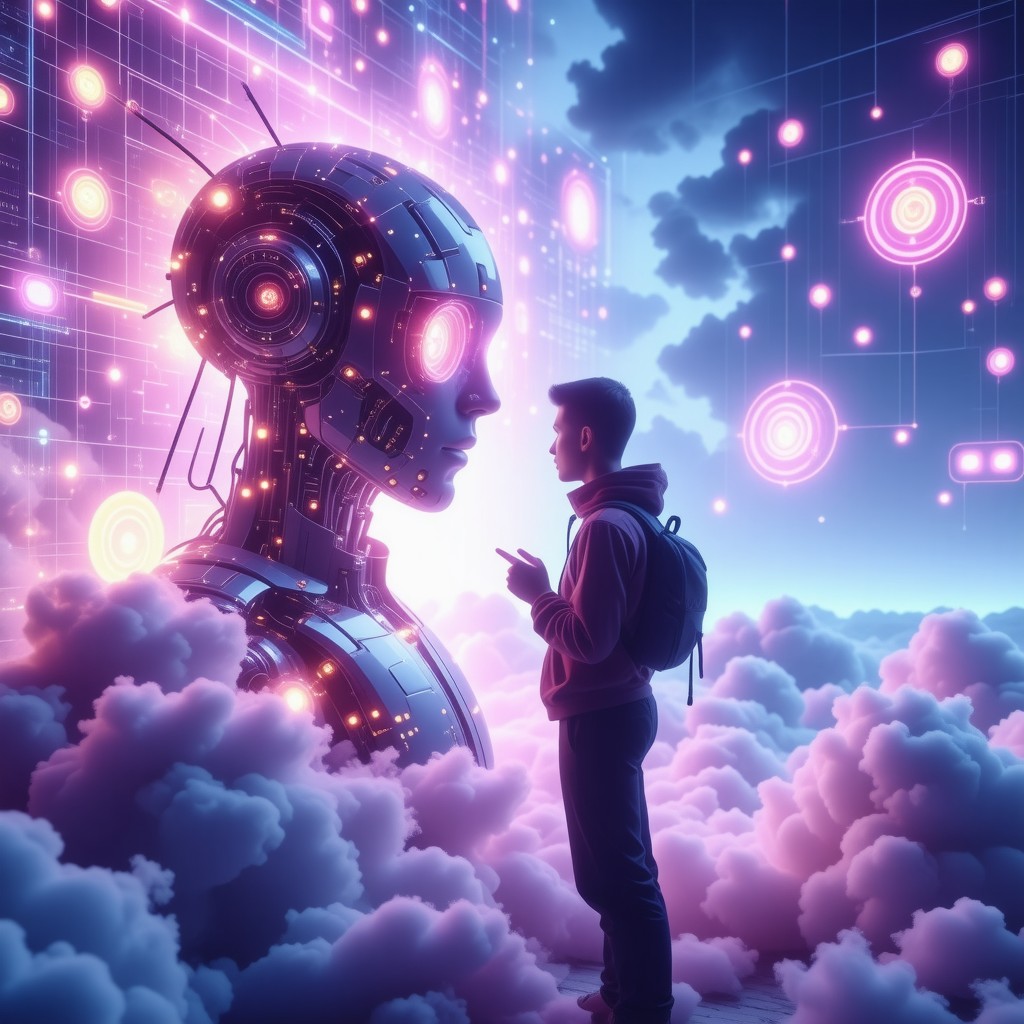
How to Make an AI Chatbot Project?
Creating an AI chatbot project can be an exciting and rewarding endeavor. By following a structured approach, you can develop a chatbot that effectively meets user needs and enhances engagement. Here’s a step-by-step guide to help you get started:
Step-by-Step Guide to Creating Your AI Chatbot Project
- Define the Purpose: Identify the specific use case for your chatbot, such as customer support, lead generation, or personal assistance. This clarity will guide your design and functionality.
- Choose the Right Platform: Select a chatbot development platform that suits your needs. Popular options include Dialogflow, Microsoft Bot Framework, and Rasa. These platforms offer robust tools for building and deploying chatbots.
- Design the Conversation Flow: Map out the conversation paths your chatbot will take. Use flowcharts to visualize interactions, ensuring a seamless user experience. Consider common user queries and responses.
- Develop the Chatbot: Utilize the chosen platform to create your chatbot. Implement Natural Language Processing (NLP) capabilities to enhance understanding of user inputs. For instance, Dialogflow provides built-in NLP features.
- Train Your Chatbot: Input various user intents and responses to train your chatbot effectively. Use real-world data to improve accuracy. Regularly update the training data based on user interactions.
- Test Your Chatbot: Conduct thorough testing to identify and fix any issues. Use testing tools provided by your platform to simulate user interactions and refine responses.
- Integrate with Messaging Platforms: If applicable, integrate your chatbot with popular messaging platforms like Facebook Messenger or WhatsApp. This expands your chatbot’s reach and accessibility.
- Customize the User Interface: Design an engaging chat widget that aligns with your brand. Customize greetings and responses to enhance user engagement.
- Monitor Performance: After deployment, continuously monitor your chatbot’s performance using analytics tools. Track metrics such as user engagement, response accuracy, and satisfaction rates.
- Iterate and Improve: Regularly update your chatbot based on user feedback and performance data. Implement new features and refine existing ones to enhance user experience.
Best Practices for Developing an Effective AI Chatbot
To ensure your AI chatbot project stands out, consider these best practices:
- Focus on User Experience: Prioritize a user-friendly design that makes interactions intuitive and enjoyable.
- Utilize Analytics: Leverage analytics to understand user behavior and refine your chatbot’s responses accordingly.
- Stay Updated: Keep abreast of the latest trends in AI chatbot technology to incorporate new features and improve functionality.
- Engage with Users: Encourage user feedback to identify areas for improvement and enhance overall satisfaction.
By following these steps and best practices, you can successfully create an AI chatbot project that not only meets user needs but also drives engagement and satisfaction. For more insights, explore resources like Brain Pod AI for advanced AI solutions.
Is Chatbot a Weak AI?
Chatbots are classified as weak AI, also known as narrow AI, which refers to artificial intelligence systems designed to perform specific tasks without possessing general intelligence or consciousness. Unlike strong AI, which aims to replicate human cognitive abilities across a wide range of functions, weak AI focuses on executing predefined tasks efficiently.
Understanding Weak AI vs. Strong AI in Chatbot Development
In the realm of chatbot development, understanding the distinction between weak AI and strong AI is crucial. Weak AI, as seen in chatbots, is engineered to handle specific tasks such as customer service inquiries or basic information retrieval. These systems utilize natural language processing (NLP) to engage users, but they operate within limited parameters and cannot think or reason beyond their programming. For instance, chatbots can provide automated responses and assist with lead generation, yet they lack the ability to understand context or emotions fully, which limits their effectiveness compared to human interaction.
Common examples of weak AI include:
- Chatbots: Programmed to engage in conversation and provide customer support.
- Recommendation Systems: Analyze user behavior to suggest products or content.
- Fraud Detection Systems: Identify unusual patterns in transactions to prevent fraud.
While chatbots represent a significant advancement in AI technology, they remain a form of weak AI, designed for specific tasks without the broader capabilities associated with strong AI. According to a study by the Stanford University Institute for Human-Centered Artificial Intelligence, the limitations of weak AI highlight the importance of human oversight in applications where nuanced understanding is crucial (Stanford HAI, 2021).
The Limitations and Capabilities of Current AI Chatbots
Current AI chatbots, including those developed for platforms like Messenger Bot, showcase impressive capabilities in automating responses and managing user interactions. However, their limitations are evident in scenarios requiring deep contextual understanding or emotional intelligence. For example, while a chatbot can efficiently handle FAQs or basic inquiries, it may struggle with complex customer issues that require empathy or nuanced conversation.
Despite these limitations, the capabilities of chatbots continue to evolve. They can now support multilingual interactions, automate workflows, and integrate with various digital platforms, enhancing user engagement and satisfaction. As businesses increasingly adopt AI chatbot projects, understanding these limitations is essential for optimizing their use and ensuring effective customer communication.
Chatbot AI Project Resources
Downloadable Templates for Your Chatbot AI Project
To kickstart your chatbot AI project, utilizing downloadable templates can significantly streamline the development process. These templates provide a foundational structure, allowing you to focus on customizing the chatbot’s functionalities to meet your specific needs. Many platforms, including Messenger Bot, offer free templates that can be easily integrated into your project. These templates often include pre-built conversation flows, user interaction scenarios, and design elements that enhance user experience. By leveraging these resources, you can save time and ensure that your chatbot is both functional and engaging.
Exploring Vercel AI Chatbot GitHub for Advanced Development
For those looking to delve deeper into advanced chatbot AI project development, the Vercel AI Chatbot GitHub repository is an invaluable resource. This repository contains a wealth of open-source projects and code snippets that can help you understand the intricacies of building a sophisticated AI chatbot. By exploring these projects, you can learn about various technologies and frameworks used in chatbot development, such as Node.js and React. Additionally, Vercel’s platform allows for seamless deployment, making it easier to test and iterate on your chatbot in real-time. Engaging with the community on GitHub can also provide insights and support as you navigate your own AI chatbot project.
